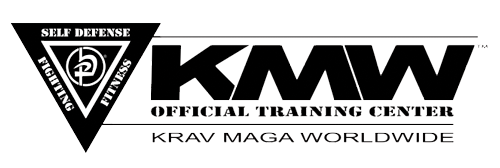
Because Krav Maga is based on instinctive movements, most first-time students pick up the basics quickly. The system is designed for this purpose. The following will be covered in your intro lesson (contact us to set up a time):
- A brief history of Krav Maga and an overview of the system
- Neutral/Passive and Fighting Stances
Unlike many systems, Krav Maga has only two “stances”: Fighting Stance and… not fighting stance. All techniques made from a prepared position begin in a fighting stance. Self-defense techniques and strikes thrown from an unprepared position (a position of disadvantage) begin in what we refer to as a neutral or passive stance (e.g. hands in your pockets, arms crossed, one hand scratching your head, etc.). - Movement
Self-defense techniques, punches, kicks… They all must come from a strong connection to the ground. Krav Maga footwork is very natural and will provide essential speed and foundation. - Straight punches
Straight punches are perhaps the most fundamental combative in Krav Maga. Having a technically strong straight punch will provide an excellent base for all other techniques. - Introduction to equipment
We train a variety of combatives (striking techniques) on three different pieces of equipment: tombstone pads, kicking shields, and focus mitts.
Level 1 classes are tailored to the students in attendance and the core skills being taught, but a basic class will look something like this:
-
Warm-Up
- Shoulder Tag / Knee Tag
Shoulder Tag and Knee Tag are not only a great warm-up, but a fundamental training tool for more advanced concepts. In Shoulder Tag, you and a partner face each other in a fighting stance and try to tag each other’s shoulders. This is kept very light, and the emphasis is on good footwork and beginning to make basic hand defenses. Knee Tag is the same, but you and your partner try to tag each other’s knees. The object is to develop the reflexes necessary for a successful takedown defense. - Calisthenics
We use basic bodyweight calisthenics for strength and conditioning. Common calisthenics in a Level 1 class are push-ups, squats, burpees, ab/core exercises. See Krav Maga Calisthenics: A Tutorial for more details on these exercises.
- Shoulder Tag / Knee Tag
-
Combatives
"Combatives are the ballistic techniques used both in fighting and in self-defense. The bulk of these techniques involve punches, kicks, elbows strikes, and knees…" (Complete Krav Maga). Not only will you train the mechanics of striking techniques, but you will learn to apply them to movement and in combinations effective for self-defense and fighting.
-
Self-Defense Techniques
The Level 1 curriculum is taught in a three-month rotation. We devote about a month each to the following: Choke/Grab Defenses, Punch Defenses, and Groundwork. Roughly half the class time will be spent learning and training techniques from these areas.
-
Drills
Drills take on a variety of forms and are what make Krav Maga unique, effective, and a lot of fun! Drills allow for a safe but realistic environment in which you will learn to perform self-defense and fighting techniques under stress and in a state of mental and physical exhaustion.



